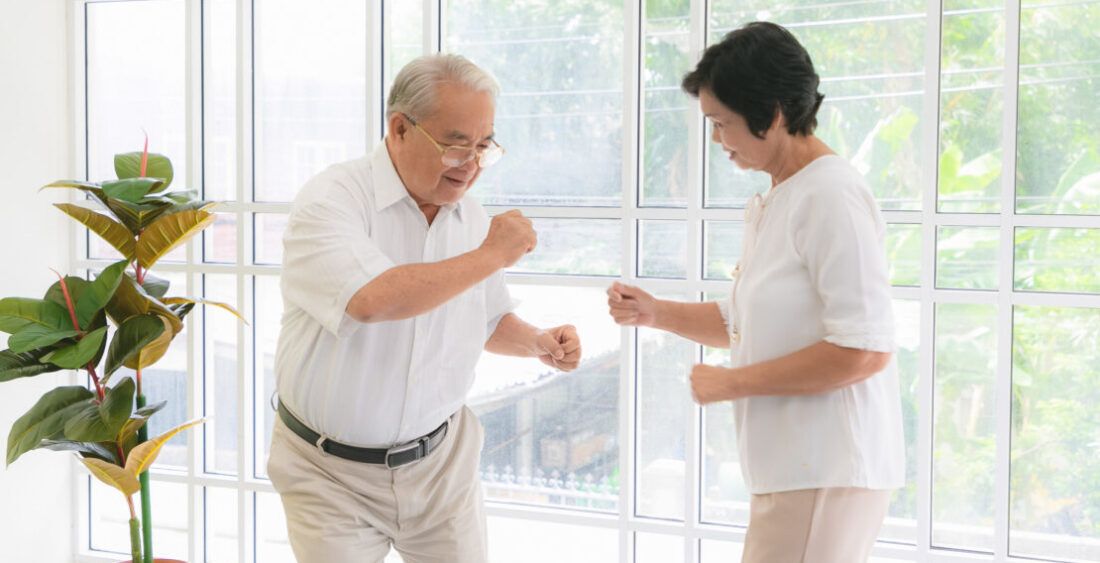Playback speed:
Dancing can be a form of expression for persons living with dementia too, as they connect and interact with others through dance. Read on to learn about Creative Dance, another potential psychosocial activity to support the well-being of persons living with dementia.
To complement the modest benefits of pharmacological treatment on cognitive decline in dementia, arts-based programmes have been increasingly used as a non-pharmacological approach to delay the effects of dementia.1,2 Amongst them, creative dance as an art form had been highlighted as a promising contribution to the health, well-being and quality of life of persons living with dementia.3
For most people, the idea of dance entails specific ‘techniques’, such as ballet, ballroom dancing, etc., and thus requires a young, fit body to be able to dance. However, for Dr Heather Hill (a dance therapist with over 30 years of experience), dance is not just for dancers, it is for everyone, including persons with dementia and severe disabilities.26
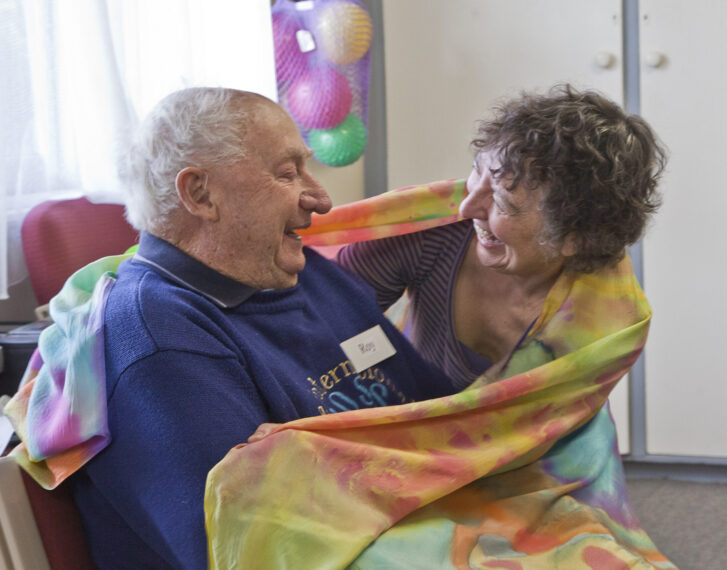
Photo: Cathy Greenblat, 2013
The intervention targets the individual and the caring relationship. It consists of:
1. Pre-greeting with each individual before simple warm-up movements;
2. Main activity that uses improvised movements with culturally appropriate music familiar to the generation of the participants;
3. Collaborative exercises that tap on the themes suggested by the group; and finally
4. A closure with greetings and sharing among the group.
The embedded opportunities for free self-expression, creativity, play and reminiscence was facilitated by a trained care professional. The following paragraphs will discuss the underlying principles of using this creative dance, the supporting evidence and its limitations, and the recommendation for best practices.
Underlying Principles of Creative Dance
While dance movement therapy requires a tertiary level certified dance movement therapist to facilitate, creative dance can be conducted by any care professional who has undergone some basic training. The activity incorporates music, movement and dance to affirm the personhood of persons living with dementia.14 The process of creating arts through the use of whole-body movements and the verbal and non-verbal cues provided, can create well-being, stability and connection with reality at the physical, sensory, emotional and social level.9 The movement repertoire will convey the subjective feelings of the individual, allowing them to be understood and validated.8 The movement approach for persons living with dementia is a process of trying to communicate on a level not limited to spoken words.7,9,10 Such meaningful communication between the participants enhances the interpersonal experiences of persons living with dementia, thereby achieving positive person work.3 It is proposed that the co-creation of creative forms of movement can help persons living with dementia feel grounded in their bodies and reality, to better understand their sense of self and place in the world.8,9
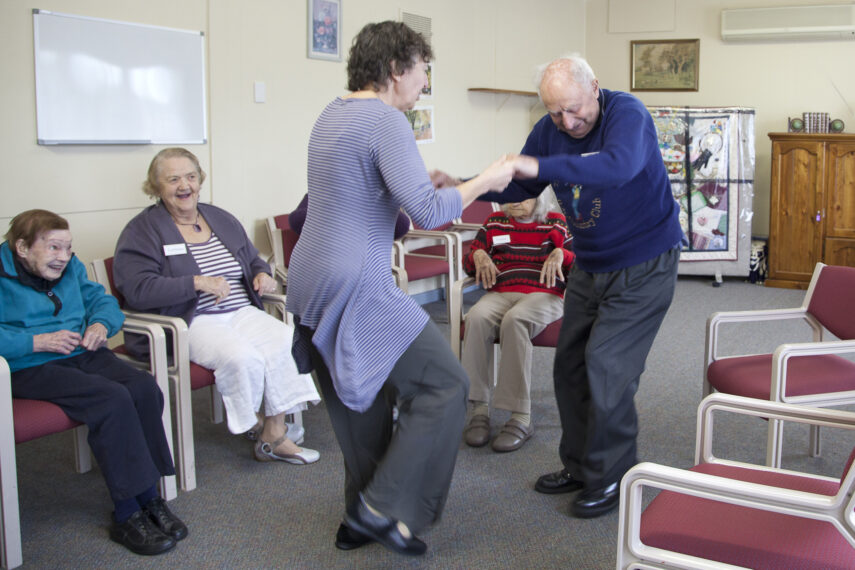
Photo: Cathy Greenblat, 2013
Benefits & Limitations of Creative Dance
Improved Quality of Life & Well-Being
The use of creative dance as an activity for persons living with dementia had been reported to improve quality of life12 and well-being while providing enjoyment and pleasure.3,11 In a particular study, the overall quality of life rating by the participants after the 6-weeks of 2 hours- weekly group-based session was statistically significant pre and post programme.13 Though the individual domain scores for physical, psychological and social were not statistically significant owing to the small sample of 10 participants. However, a larger local study on 35 participants concluded that 8-weeks of weekly 1 hour creative dance activity is a means to enhance the overall mood and engagement level of the individuals.3 This is in addition to the improvement in the subjective perceived state of satisfaction in one’s abilities and achievement.
Affirming Personhood
The process of creating arts through the use of whole-body movements and the verbal and non-verbal cues provided, allowed the participants to find comfort, to relate to the facilitator and share their feelings and experiences.7 This in turns, fostered the social interaction and a sense of belonging and inclusion among the participants.1 Hayes and Povey15 also emphasized that in the movement approach, facilitators focused on enabling and encouraging engagement, assessing and providing the needed level of support while maintaining warmth and unconditional positive regard. Such approaches were potential personal enhancers to the personhood of the participants. This could lead to a sense of inclusion, as well as feeling empowered in meaningful task participation and validation of self and identity.
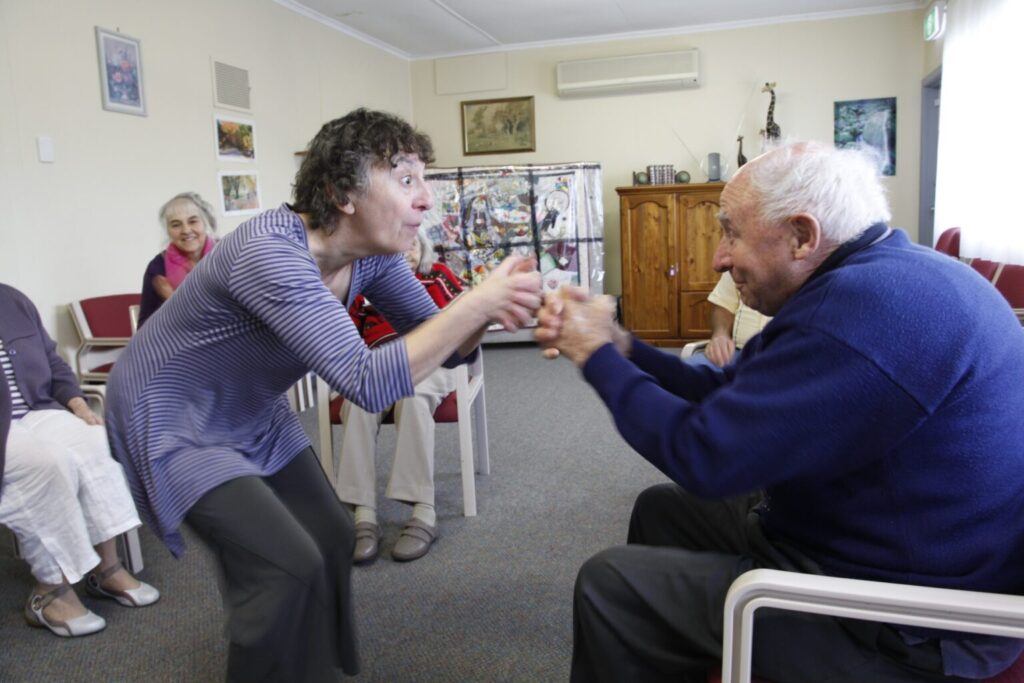
Photo: Cathy Greenblat, 2013
Familiarity with the reminiscent music used created opportunities for discussion of past memories.16 Both local studies echoed that creative dance interventions are associated with the ability for the participants to communicate and express themselves using non-verbal and movement as substitutes for speech.3,13 This also contributed to a greater sense of security and comfort within the group.
Enhance Physical & Cognitive Health
Dance intervention was an alternative to improve the physical health and functional fitness in older adults. A systematic review showed that participating with a minimum of weekly, 45-minute duration for at least 6 weeks, can have a significant positive effect on muscular strength, endurance and balance.17 Locally, participation in creative dance intervention was associated with increased gait speed and self-rated confidence level in the individual’s activities of daily living.3 Creative dance might have contributed to the maintenance of motor abilities in the older persons as they improvise on their movement and adapt to the spatial and temporal demands. Yan et al.18 further concluded that exercise in the form of dance intervention has a significantly greater effect compared to structured exercise on the capacity of improving functional performance in the timed up-and-go test, and in balance reflected the Berg balance score. Moreover, dance as an exercise programme compared to structured exercise is better received by the older population. The pleasure and enjoyment served to encourage regular participation was demonstrated by its low attrition rates and high completion rates.18 Dance also eliminated barriers to participation such as pre-existing medical conditions and physical limitations, which were prime considerations when participating in physical exercises.17
Dance that requires creative improvisation, as opposed to therapeutic exercises, could induce cognitive flexibility.19 In creative dance, participants have to adapt to the constraints in space, time, and interaction with others. Their study suggested that the cognitive flexibility was correlated to enhanced motor flexibility, resulting in better postural control in the participants. On the same hand, the emotional and social aspects of dancing had beneficial effects on cognitive function.20 Learning the steps, being focused on others in the group and coordinating movement with the tune of the music elicited multiple brain network activations. The structured interaction in the group also enhanced general cognitive functioning since it promoted interdependence, thereby allowing the individuals to be less anxious and uncertain, providing more opportunities for them to respond to the cognitive demands.21
Existing Research Gap
While there is a call for increased awareness for the use of creative dance, its limitations need to be recognised. Most studies were small and lacking comparative controls. Local studies mainly sampled on persons with mild to moderate dementia and the benefits for the persons with advanced dementia were less discussed. The extent to which health comorbidities impacted on the outcomes of creative dance also warrants further investigation. It also remained unclear if the benefits previously mentioned are long-term. The sustainability of the programme, including outcome-based on facilitation by care staff and the possible support from family members and/or volunteers instead of therapists in the local setting, still requires more in-depth research.
Recommendation for Best Practices
Creative Dance as a Means
Creative dance as an activity has a therapeutic effect if it is used as a means to draw out social interaction from the participants. It is the deliberate creation of opportunities to better understand the individuals that allows them to flow from their physical doing into well-being.3 The structured improvisation of the session plan is vital to respect and acknowledge the verbal and movement input of the participants, allowing self-expression and strengthening their self-esteem.10 While the presence of a group provides opportunities for persons living with dementia to interact, providing the just right activity challenge and use of relevant stimuli is the basis of good quality groups to significantly impact mood and engagement.22 Individual’s creativity should not be limited to the creative expressions in the moment but also viewed as how the interaction and relationship is forged with each contribution.14
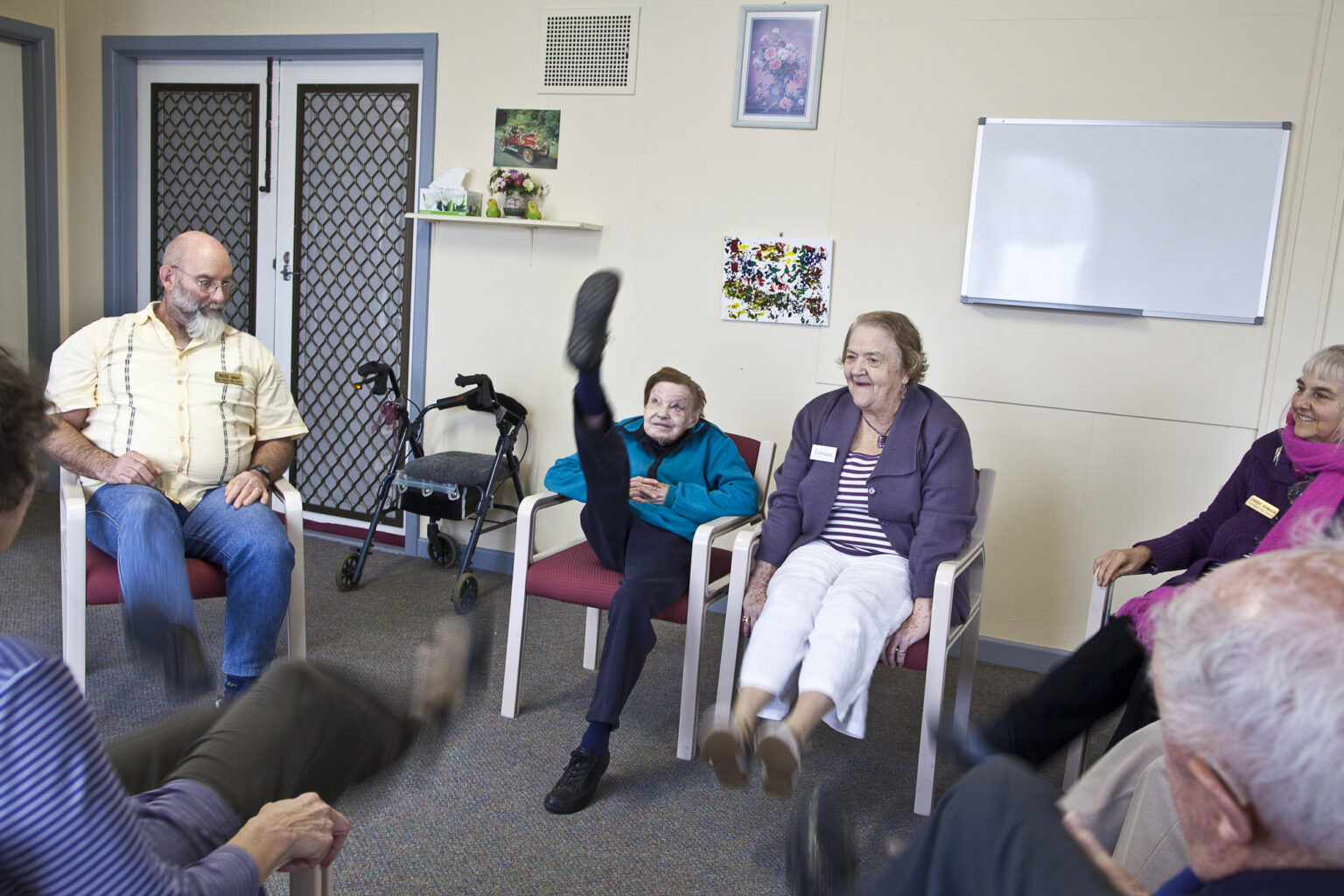
Photo: Cathy Greenblat, 2013
Constant practical adaptations were essential to enable persons living with dementia to succeed in the task given. Multi-sensory stimulation can also be incorporated through the use of props such as coloured balls, scarves, textiles to facilitate creative expression with tool use and instil a sense of fun.23
Facilitating Person-Centred Care Interaction
The facilitator has a bearing on the quality of the intervention. The skill of facilitation and style of approach can affect the extent of positive outcomes.24 While the session is intentionally designed in response to the composition and abilities of the participants, the preferred approach is to constantly customise and modify the session to suit the needs of the participants.3,23 Supported by the understanding of each individual’s likes and dislikes, the facilitator needs to pick up both the verbal and non-verbal cues demonstrated by each participant throughout the session, and tailor the intervention to meet one’s needs. The facilitator needs to actively listen and not judge, and have the flexibility and creativity in problem-solving, tuning in to the person and the group dynamics to find the rhythm that proffers most stability and security to optimize participation.10 As the group jointly constructs the creative expressions of self through movement, singing, mirroring, spontaneous play and joke-making, the facilitator builds on the relationship and interacts by supporting and upholding the psychological needs of comfort, identity, attachment, occupation and inclusion. When opportunity rises, the discussion of the happy past experiences as well as the sad moments are both of equal importance to acknowledge the individual as a whole, showing recognition of the participant’s uniqueness, valuing them and accepting them.
Enabling Environment
Supportive physical and social environment will result in greater gains for the participants. Provision of a dedicated space with good ventilation and lighting, that is set apart from other possible concurrent activities can help minimise the noise levels and disruption from activity engagement.3,23,24 Ensuring adequate equipment such as stable chairs proffers the option of both sitting and supported standing during creative expression of self. Availability of props and back-up music helps the session to continue flowing despite technical difficulties. Empowering the facilitator on knowledge on dementia and frailty is vital so as to help overcome some barriers posed by comorbid health conditions of the participants on intervention delivery such as limited attention span, fatigue, physical weakness and the potential risk of falling.23 An overall workplace culture that embraces the programme is also a key to reaping benefits from the creative dance intervention. Other than allocating adequate staffing ratio to ensure appropriate supervision and regularity of the session, having staff who are enthusiastic about the programme is associated with more positive reactions from the participants.3,23,25
Conclusion
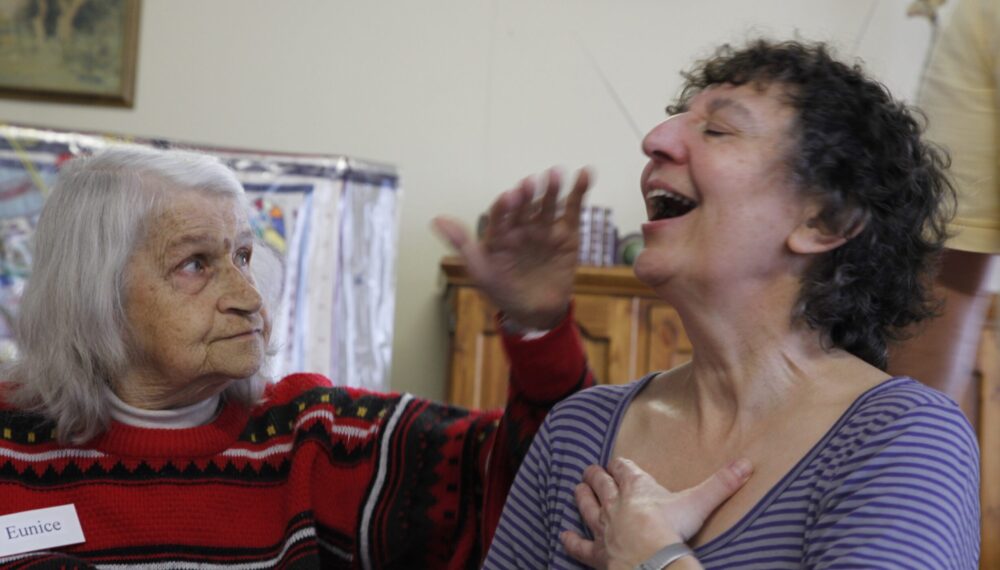
Photo: Cathy Greenblat, 2013
Tell us how we can improve?
Additional Resources
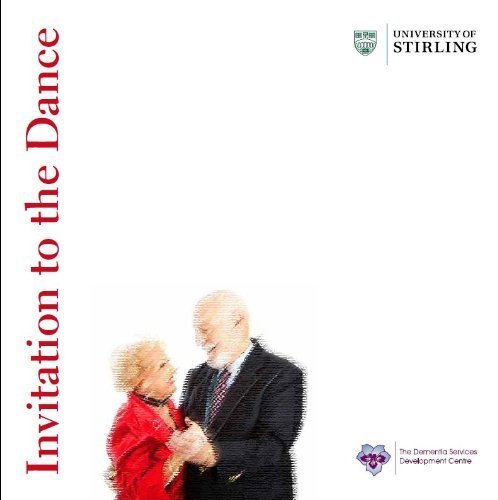
Invitation to the Dance by Heather Hill
A user-friendly guide for care professionals who is keen to incorporate dance and movement into their sessions with participants living with dementia.
Visit the DTAA site for more publications.
Learn more about dance movement therapy, you may also check out these websites:
- Schneider, J. (2018). The arts as a medium for care and self-care in dementia: Arguments and evidence. International Journal of Environmental Research and Public Health, 15, https://doi.org/10.3390/ijerph15061151
- Skinner, M.W., Herron, R.V., & Bar, R.J. (2018). Improving social inclusion for people with dementia and carers through sharing dance: A qualitative sequential continuum of care pilot study protocol. BMJ Open, 8, e026912. https://doi.org/10.1136/bmjopen-2018-026912
- Koh, W.L.E., Low, F., Kam, J.W., Rahim, S., Ng, W.F., & Ng, L.L. (2019). Person-centred creative dance intervention for persons with dementia living in the community in Singapore. Dementia, 1-14. https://doi.org/10.1177/1471301218823439
- Chenoweth, L., Stein-Parbury, J., Lapkin, S., Wang, A., Liu, Z., & Williams, A. (2019). Effects of person-centred care at the organizational-level for people with dementia: A systematic review. PLoS ONE, 14(2), e0212686. https://doi.org/10.1371/journal.pone.0212686
- Kitwood, T.M. (1997). Dementia reconsidered: The person comes first. Open University Press.
- Manthorpe, J., & Samsi, K. (2016). Person-centred dementia care: Current perspectives. Clinical Interventions in Aging, 11, 1733-1740. https://doi.org/10.2147/CIA.S104618
- Kayoko, A.D. (1997). Dance movement therapy and reminiscence: A new approach to senile dementia in japan, The Arts in Psychotherapy, 24(3), 291-298. https://doi.org/10.1016/S0197-4556(97)00031-2
- Coaten, R., & Newman-Bluestein, D. (2013). Embodiment and dementia: Dance movement psychotherapists respond. Dementia, 12(6), 677-681. https://www.doi.org/10.1177/1471301213507033
- De Tord, P., & Brauninger, I. (2015). Grounding: Theoretical application and practice in dance movement therapy. The Arts in Psychotherapy, 43, 16-22. http://dx.doi.org/10.1016/j.aip.2015.02.001
- Zeindlinger, E. (2014). Between the lines: Communication with people with dementia in creative movement sessions. Anthropology in Action, 21(1), 24-29. https://doi.org/10.3167/aia.2014.210105
- Beard, R.L. (2011). Art therapies and dementia care: A systematic review. Dementia, 11(5), 633-656. https://doi.org/10.1177/1471301211421090
- Gabriel, C., Ting, S., Liong, A., & Hameed, S. (2014, September 5). Impacting quality of life and cognition in dementia patients through dance movements: Everyday Waltzes [Poster presentation]. Singhealth Duke-NUS Scientific Congress 2014.
- Hameed, S., Shah, J.M., Ting, S., Gabriel, C., Tay, S.Y., Chotphoksap, U., & Liong, A. (2018). Improving the quality of life in persons with dementia through a pilot study of a creative dance movement programme in an Asian setting. International Journal of Neurorehabilitation, 5, https://doi.org/10.4172/2376-0281.1000334
- Bellass, S., Balmer, A., May, V., Keady, J., Buse, C., Capstick, A., Burke, L., Bartlett, R., & Hodgson, J. (2019). Broadening the debate on creativity and dementia: A critical approach. Dementia, 18, 2799-2820. https://doi.org/10.1177/1471301218760906
- Hayes, J., & Povey, S. (2011). The creative arts in dementia care. Jessica Kingsley Publishers.
- Choo, T., Barak, Y., & East, A. (2019). The effect of intuitive movement reembodiment on the quality of life of older adults with dementia: A pilot study.
- American Journal of Alzheimer’s Disease & Other Dementias, 35, 1-7. https://doi.org/10.1177/1533317519860331
- Hwang, P.W.N., & Braun, K.L. (2015). The effectiveness of dance interventions to improve older adults’ health: A systematic literature review. Alternative Therapies, 21(5), 64-70.
- Yan, A.F., Cobley, S., Chan, C., Pappas, E., Nicholson, L.L., Ward, R.E., Murdoch, R.E., Gu, Y., Trevor, B.L., Vassallo, A.J., Wewege, M.A., & Hiller, C.E. (2018). The effectiveness of dance intervention on physical health outcomes compared to other forms of physical activity: A systematic review and meta-analysis. Sports Medicine, 48, 933-951. https://doi.org/10.1007/s40279-017-0853-5
- Ferrufino, L., Bril, B., Dietrich, G., Nokana, T., & Coubard, O.A. (2011) Practice of contemporary dance promotes stochastic postural control in aging, Frontiers in Neuroscience, 5(169), 1-9.
- Kim, S.H., Kim, M., Ahn, Y.B., Lim, H.K., Kang, S.G., Cho, J., Park, S.J., & Song, S.W. (2011). Effects of dance exercise on cognitive function in elderly patients with metabolic syndrome: A pilot study. Journal of Sports Science and Medicine, 10, 671-675.
- Ybarra, O., Burnstein, E., Winkielman, P., Keller, M.C., Manis, M., Chan, E., & Rodriguez, J. (2008). Mental exercising through simple socializing: Social interaction promotes general cognitive functioning. Society for Personality and Social Psychology, 34(2), 248-259. https://doi.org/10.1177/0146167207310454
- Cohen-Mansfield, J. (2018). The impact of group activities and their content on persons with dementia attending them. Alzheimer’s Research & Therapy, 10, https://www.researchgate.net/publication/324277732_The_impact_of_group_activities_and_their_content_on_persons_with_dementia_attending_them
- Gomaa, Y.S., Slade, S.C., Tamplin, J., Wittwer, J.E., Gray, R., Blackberry, I., & Morris, M.E. (2020). Therapeutic dancing for frial older people in residential aged care: A thematic analysis of barriers and facilitators to implementation. The International Journal of Aging and Human Development, 90(4), 403-422. https://doi.org/10.1177/0091415019854775
- Rylatt, P. (2012). The benefits of creative therapy for people with dementia. Nursing Standard. 26, 42-47. https://doi.org/10.7748/ns2012.04.26.33.42.c9050
- Guzman-Garcia, A., Hughes, J.C., James, I.A., & Rochester, L. (2013). Dancing as a psychological intervention in care homes: A systematic review of the literature. International Journal of Geriatric Psychiatry, 28, 914-924. https://doi.org/10.1002/gps.3913

